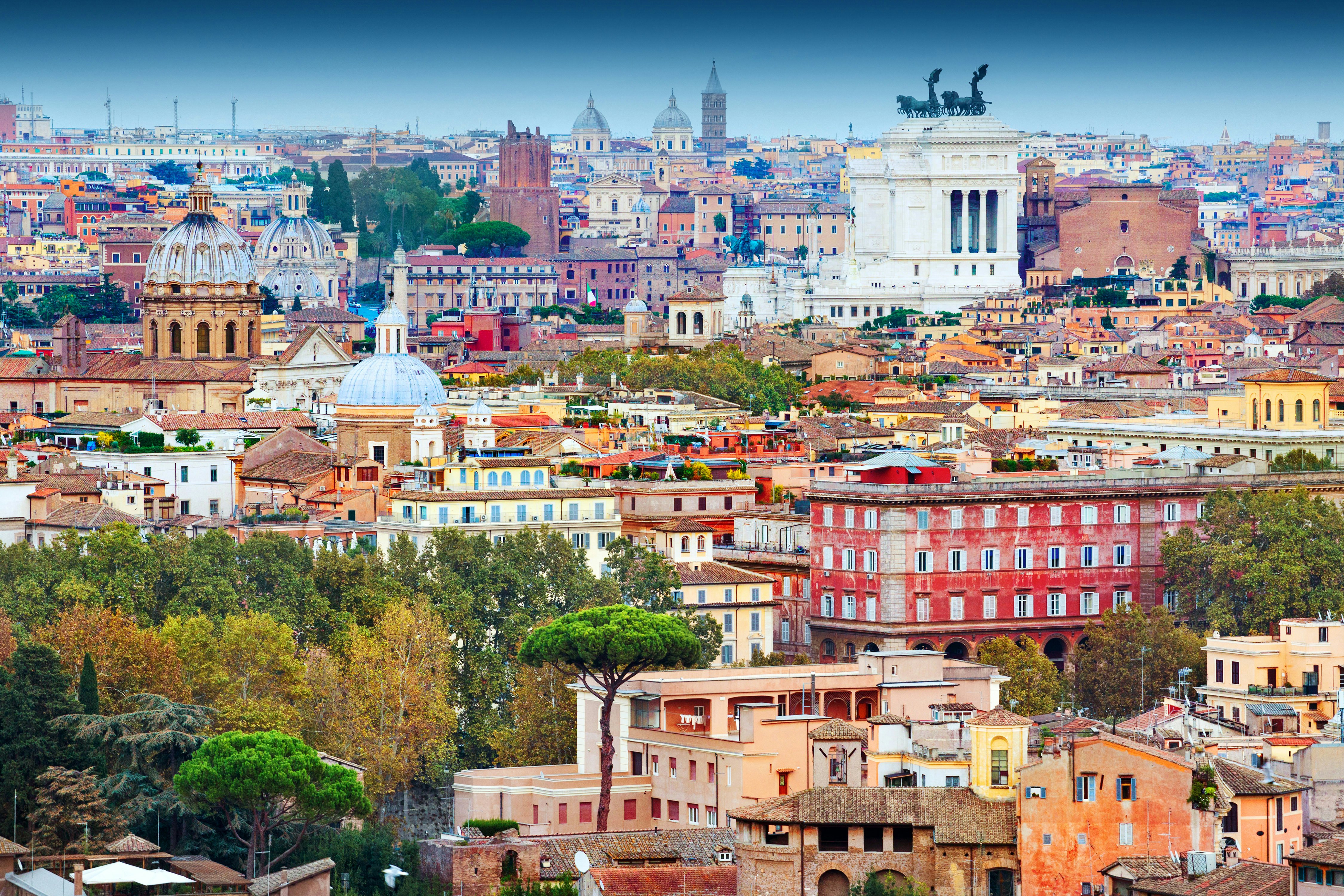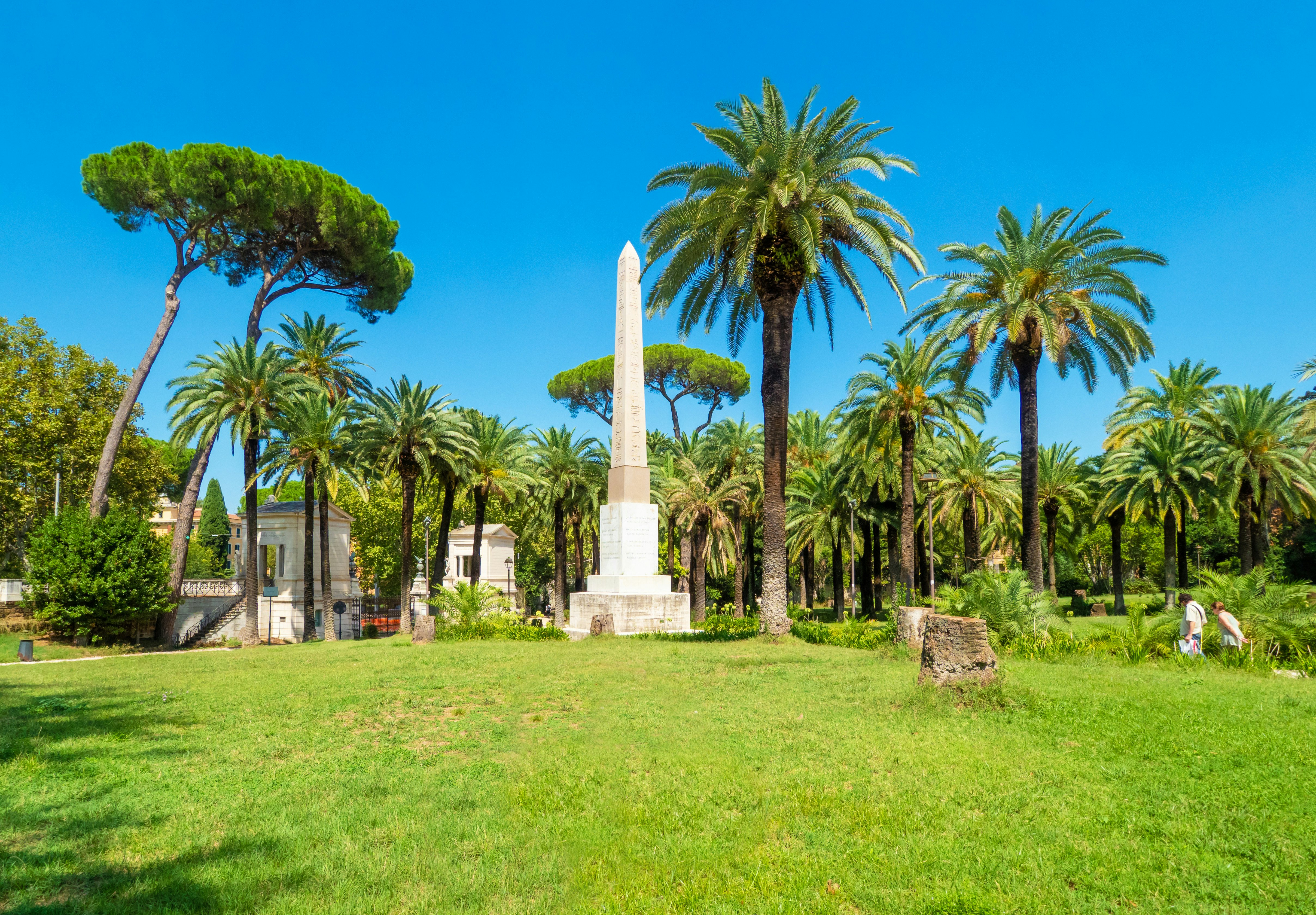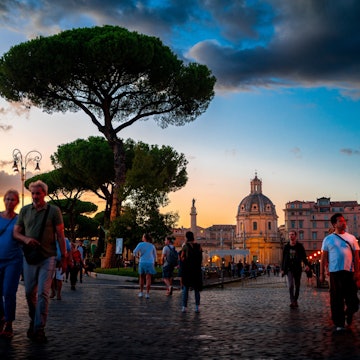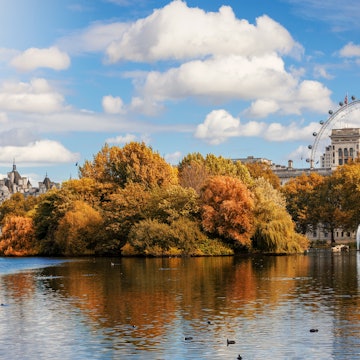

Visit the Villa Borghese in Rome. Giordano Cantone/Shutterstock
If you're thinking about traveling to Rome, the first attractions that may come to mind are historical jewels such as the Colosseum, the Trevi Fountain and St Peter's Basilica.
But there's a rich history in the city's parks as well, and best of all – it doesn't cost a thing to enjoy them. The most famous is Rome's central park, Villa Borghese, with its leafy lanes, magnificent museums and bikes for hire.
1. Villa Borghese
Best for a convenient drop into green space
The most central of Rome’s main parks, Villa Borghese was originally the 17th-century estate of Cardinal Scipione Borghese. It covers about 100 acres of wooded glades, gardens and grassy banks and offers plenty of space to run around in – though it’s not absolutely car-free. Among its attractions are the landscaped Giardino del Lago, Piazza di Siena, a dusty arena used for Rome’s top equestrian event in May, and a panoramic terrace on the Pincio Hill.
Film buffs should head to the area around the Piazzale San Paolo del Brasile entrance, where the Casa del Cinema hosts regular film-related events, and the Cinema dei Piccoli is one of the world’s smallest cinemas.
Bike hire is available at various points, including the Bici Pincio kiosk in the southern part of the park, as are four-seater electric bikes. Or try Villa Borghese Bike Rental.

2. Vatican Gardens
Best for pairing with a Vatican visit
Up to a third of the Vatican is covered by the perfectly manicured Vatican Gardens, which contain fortifications, grottoes, monuments, fountains and the state's tiny heliport and train station. Visits are by guided tour only – either on foot (two hours) or by open-air bus (45 minutes) – for which you’ll need to book at least a week in advance.
After the tour you're free to visit the Vatican Museums on your own; admission is included in the ticket price. Founded by Pope Julius II in the early 16th century and enlarged by successive pontiffs, the Vatican Museums boast one of the world's greatest art collections. Exhibits, which are displayed along a little more than 4 miles of halls and corridors, range from Egyptian mummies and Etruscan bronzes to ancient busts, old masters and modern paintings.

3. Pincio Hill Gardens
Best offshoot from the Spanish Steps
Take in dreamy views from these balcony gardens which overlook Piazza del Popolo. The 19th-century Pincio Hill is named after the Pinci family, who owned this part of Rome in the 4th century. It’s quite a climb from the piazza, but at the top you’re rewarded with lovely views over to St Peter’s and the Gianicolo Hill. Alternatively, approach from the top of the Spanish Steps. From the gardens, strike out to explore Villa Borghese, Villa Medici or Chiesa della Trinità dei Monti at the top of the Spanish Steps.
If you're looking to take a walking tour, consider starting at Pincio Hill and ending at Keats-Shelley House.

4. Gianicolo
Best for Rome skyline views
The verdant hill of Gianicolo (or Janiculum) is dotted by monuments to Garibaldi and his makeshift army, who fought pope-backing French troops in one of the fiercest battles in the struggle for Italian unification on this spot in 1849. The Italian hero is commemorated with a massive monument in Piazzale Giuseppe Garibaldi, while his Brazilian-born wife, Anita, has her own monument about 650ft away in Piazzale Anita Garibaldi; she died from malaria, together with their unborn child, shortly after the siege.
Rome's highest hill is a superb viewpoint with sweeping panoramas over Rome’s rooftops, and has several summer-only bars that are blessed with thrilling views. There are also weekend children’s puppet shows on the hill (a long-standing tradition) and a small collection of carnival rides. Pro tip: trees obstruct the stunning views from many vantage points, go just north of the snack stands near the Garibaldi Monument to see Rome in all its glory. Take bus 115 from the Viale di Trastevere to Gianicolo, then walk back down, stopping at the Tempietto di Bramante & Chiesa di San Pietro in Montorio. Visit from July to September and catch the annual music festival Gianicolo in Musica staged atop the Gianicolo Hill.

5. Orto Botanico
Best for relaxation
A great place to unwind, Rome’s botanical garden cloaks the steep slopes of the Gianicolo Hill.
Formerly the private grounds of Palazzo Corsini, Rome’s 30-acre botanical gardens are a little-known, slightly neglected gem and a great place to unwind. Plants have been cultivated here since the 13th century, and the current gardens were established in 1883, when the grounds of Palazzo Corsini were given to the University of Rome. They now contain up to 8000 species, including some of Europe’s most rare plants.
There are also various architectural delights, including the Scalinata delle Undici Fontane (Staircase of 11 Fountains) designed by Ferdinando Fuga, the architect behind Palazzo Corsini and the loggia at Santa Maria in Maggiore. The garden entrance is at the end of Via Corsini. Note that there is no entrance or exit at the top of the gardens on the Gianicolo.

6. Parco Savello
Best for a romantic moment
Officially called the "Parco Savello" but known to every Roman as the "Giardino degli Aranci" (Orange Garden), this walled park is a romantic haven. Head down the central avenue, passing towering umbrella pines and lawns planted with blooming orange trees, to bask in heavenly sunset views of St Peter’s dome and the city's rooftops.

7. Villa Celimontana
Best for picnics
With its grassy banks and colorful flower beds, this leafy park is a wonderful place to escape the crowds and enjoy a relaxed summer picnic. At its center is a 16th-century villa housing the Italian Geographical Society, while to the south stands a 39ft (11.8m) plus Egyptian obelisk.
Legend surrounds this ancient monument with one story holding that the globe on the top contains the ashes of the emperor Augustus. Another tells how a workman lost his arm whilst erecting the obelisk and that the severed limb is buried beneath its base.

8. Roseto Comunale
Best for enjoying rose gardens
Stretched out on the slopes of the Aventine Hill, this idyllic garden boasts more than 1100 of the rarest roses, coaxed into life each spring by a team of horticultural experts. The ancient Circo Massimo plays backdrop, and is just as striking as the grounds themselves.

9. Villa Torlonia
Best for history buffs
This atmospheric, often overlooked, park off Via Nomentana is steeped in WWII history. Full of towering pine trees, palms and scattered villas, this splendid but often ungroomed 19th-century park once belonged to Prince Giovanni Torlonia (1756–1829), a powerful banker and landowner. His large neoclassical villa, Casino Nobile, later became the Mussolini family home (1925–43) and, in the latter part of WWII, Allied headquarters (1944–47). These days it's part of the Musei di Villa Torlonia museum. By appointment, tour Mussolini's bunker under the park.

10. Via Appia Antica
Best for a combination of cycling and hiking
Named after consul Appius Claudius Caecus, who laid the first 56 mile (90km) section in 312 BCE, ancient Rome’s regina viarum (queen of roads) was extended in 190 BCE to reach Brindisi. Via Appia Antica has long been one of Rome’s most exclusive addresses, a beautiful cobbled thoroughfare flanked by grassy fields, Roman structures and towering pine trees. Most splendid of the ancient houses was Villa dei Quintili, which was so desirable that Emperor Commodus murdered its owner and took it for himself.
The Appian Way has a dark history – it was here that Spartacus and 6000 of his slave rebels were crucified in 71 BCE, and it was here that the early Christians buried their dead in 186 miles (299km) of underground catacombs. You can’t visit them all, but three major catacombs – San Callisto, San Sebastiano and Santa Domitilla – are open for guided exploration.
The most pleasurable way of exploring the Appian Way is by foot and bicycle. Walk the bike-unfriendly northern portion, then rent a bike from Appia Antica Caffè and explore the southern portion, with its good longer-distance rides. Pick up detailed maps at the Service Center Appia Antica at the northern end of the road. Alternatively book a guided tour by bike, on foot or by electric golf cart.
11. Villa Ada
Best for a long walk
Once the private estate of King Vittorio Emanuele III, Villa Ada is a big rambling park, about 395 acres, with shady paths, lakes, lawns and woods. Located northeast of the city center, the park is ideal for a long walk. It's popular with locals and explodes into life in summer when outdoor concerts are staged during the Roma Incontra il Mondo festival.

12. Villa Doria Pamphilj
Best for runners
Lorded over by the 17th-century Villa Doria Pamphilj is Rome’s largest landscaped park – many a Roman's favorite place to escape the city noise and bustle. Once a private estate, it was laid out around 1650 for Prince Camillo Pamphilj, nephew of Pope Innocent X. It's a huge expanse of rolling parkland, shaded by Rome's distinctive umbrella pines. At its center is the prince’s summer residence, Casino del Belrespiro (used for official functions today), with its manicured gardens and citrus trees.
The park, city-owned today, is a popular jogging spot.
















